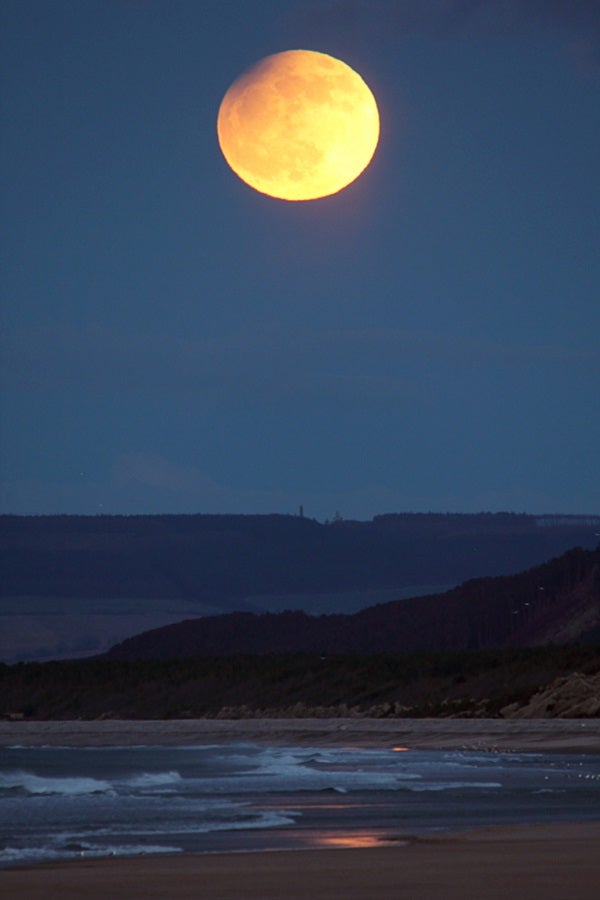A penumbral eclipse occurs when the Moon passes through the less dark outer portion of Earth’s shadow, which astronomers call the penumbra. (The dark inner part of the shadow is the umbra.) In fact, the penumbra is so slight that you won’t see any shading for roughly the first hour. And any clouds — even thin ones — will hamper the view greatly.
You’ll also need a fairly unobstructed horizon. That’s because only Moon-watchers in Europe, Africa, and the eastern parts of Canada and South America will be able to see the entire event. For those of us in the rest of Canada, the United States, Mexico, and western South America, moonrise will happen with the eclipse already in progress.
Look for unusual shading on the Moon’s southern half. The edge there will be the darkest because that part of the Moon is closest to the center of Earth’s umbra. If you pay attention, you can watch the Moon move through Earth’s shadow. Although our lone natural satellite appears to rise in the east and set in the west each day, that motion is an illusion caused by Earth’s rotation. The Moon actually travels through our sky from west to east. That means that as you watch this eclipse, the shadow will appear to move from left to right (east to west) across the Moon’s face.
This event should whet your appetite for the next lunar eclipse — a much more dramatic total — that will be visible across North America six months from now, April 14/15, 2014.










